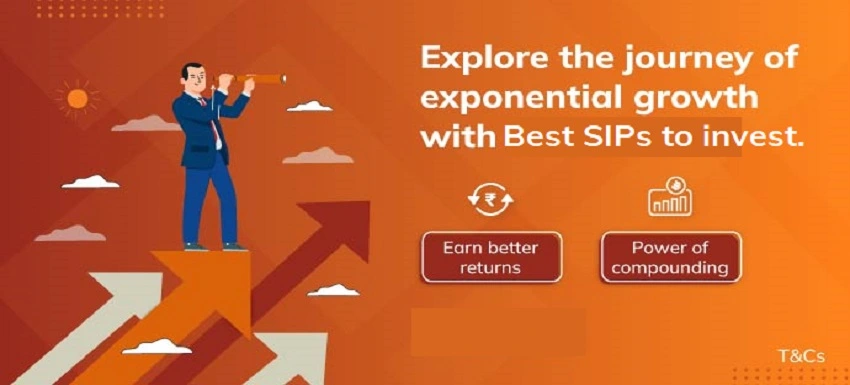What are Mutual Funds?


Mutual Funds are investment pools where money from various investors is collected and then invested in a diversified portfolio of assets like stocks and bonds. Investors in Mutual Funds own shares of the fund, which, in turn, owns shares in other companies or government bonds.
The investors cannot directly own the stocks held by the fund. They share in the profits or losses of the entire fund equally. This shared ownership model is why they are called 'Mutual Funds,' offering investors a way to access a diversified portfolio without needing to directly manage individual mutual fund investments.
Advantages of Mutual Funds


These are some of the advantages of investing in Mutual Funds
1. Diversification
Mutual funds offer diversification by investing in a variety of assets, spreading risk across different securities. It helps investor’s portfolio from market volatility.
2. Professional Management
Experienced fund managers with a rich experience in the market make investment decisions, leveraging their expertise for potentially higher returns.
3. Liquidity
Mutual funds offer high liquidity, which means investors can buy or sell fund units at any time, providing flexibility to their investments.
4. Tax Benefits
ELSS mutual funds offer tax advantages, allowing investors to save up to Rs 1.5 lakh under Section 80C with a three-year lock-in period.
5. Affordability
Mutual funds are an affordable means of investment, which makes them accessible to investors with varying capital levels, making them affordable for all.
6. Safe Investment
Mutual funds investments are regulated by SEBI, and provide a safe investment option for investors seeking stability and growth
What are the types of Mutual Fund investments?


The types of Mutual Fund (MF) investments can be broken down depending on different factors - here are the different types:
Types based on Asset Class
- Equity Funds: Invest in company shares, offering high growth potential.
- Debt Funds: Invest in bonds, providing steady income.
- Money Market Funds: Invest in low-risk, short-term securities.
- Hybrid Funds: Blend stocks and bonds for growth and stability.
Types based on Investment Goals
- Growth Funds: Aim for capital appreciation with high-growth stocks.
- Income Funds: Generate regular income through bonds and dividends.
- Liquid Funds: Prioritise liquidity and safety with short-term debt.
- Tax Saving Funds: Provide tax benefits under Section 80C with equity investments.
Types based on Structure
- Open-ended Funds: Offer continuous buying and selling flexibility.
- Closed-ended Funds: Have fixed maturity periods and limited units.
- Interval Funds: Combine features of open and closed-ended funds.
Types based on Risk
- Very Low-Risk Funds: Invest in low-risk securities for capital preservation.
- Low-Risk Funds: Aim for income generation with slightly higher risk.
- Medium Risk Funds: Balance growth and risk with equity and debt investments.
- High-Risk Funds: Focus on capital appreciation with increased volatility.
- Specialised Mutual Funds: Investment options tailored to meet specific goals.
- Sector Funds: Focus on specific industries or sectors for potential performance.
- Index Funds: Cost-effective exposure to overall markets or specific segments.
- Funds of Funds: Diversified portfolios through investing in other mutual funds.
- Emerging Market Funds: Growth opportunities in developing economies with higher risk.
- International/Foreign Funds: Diversification beyond domestic markets for potential returns.
- Global Funds: Blend domestic and foreign investments for broad diversification.
- Real Estate Funds: Exposure to the real estate market without direct property ownership.
- Commodity-focused Stock Funds: Indirect exposure to commodity markets through related companies.
- Market Neutral Funds: Balanced positions to generate returns with reduced market risks.
- Inverse/Leveraged Funds: Unique strategies providing inverse returns or amplifying performance.
- Asset Allocation Funds: Automatic portfolio adjustments for specific risk-return profiles.
- Gift Funds: Charitable giving with tax advantages and support for causes.
- Exchange-Traded Funds (ETFs): Liquidity and diversified exposure combining mutual fund and stock elements.
Why Investing in Mutual Funds through ICICI Bank?


How to Invest in
Mutual Funds?
Explore Our Mutual Fund Videos

Mutual Fund FAQs
Is Mutual Fund a good investment?


Mutual Funds are a good investment option for investors looking to diversify their portfolios. Instead of taking exposure to only one company or industry, a Mutual Fund investor invests in different securities and minimises your portfolio's risk.
How are returns earned in Mutual Funds?


Mutual Fund returns are calculated by computing appreciation in the value of your investments over a period as compared to the initial investment. The Net Asset Value of Mutual Fund indicates its price and is used in calculating returns for your Mutual Fund investments. Using a MF Calculator, you can easily calculate the returns on your mutual fund investment.
Are Mutual Funds taxable?


By investing in Mutual Funds, an investor can earn returns in the form of capital gains and dividend** income, which are taxable in the hands of the investor.
A capital gain / loss arises when an investor sells any number of units of Mutual Funds
An investor receives a dividend in proportion to the number of units held at the time of announcement of dividend, which is distributed by companies to investors when they earn a surplus.
Tax on Capital Gains Received from Mutual Funds:
The tax on capital gains depends on the period of holding (short-term or long-term) and the type of capital asset.
In the case of Equity Mutual Funds, an investment tenure of less than 1 year (12 months) is a short-term investment. Any investment of over one year is a long-term investment
In case of Debt and Hybrid Mutual Funds, an investment tenure of up to 2 years (24 months) is a short-term investment and any investment of over 2 years (24 months) is considered as long-term.
| Equity Mutual Funds / Equity Index Fund / Equity ETF / Equity FoF / BAF / Equity Savings / Arbitrage / Aggressive Hybrid* |
Redemption up to Jul 22, 2024 (Pre-Budget) | Redemption on or after Jul 23, 2024 (Post-Budget) | ||
|---|---|---|---|---|
| STCG | LTCG | STCG | LTCG | |
Period of Holdings (Months) |
<12 |
>12 |
<12 |
>12 |
Type of Gain |
Short-Term |
Long-Term |
Short-Term |
Long-Term |
Taxation Rate |
15% |
10% (on gains above ₹1 lakh) |
20% |
12.50% (on gains above ₹1.25 lakh) |
*STT is applicable on these funds as >= 65% is invested in domestic equity shares BAF is considered here as in most cases BAF schemes maintain gross exposure of % or more to equity and equity related instruments.
| Debt Oriented Fund | Investment prior to Apr 1, 2023 & redemption up to Jul 22, 2024 (Pre-Budget) | Investment prior to Apr 1, 2023 & redemption on or after Jul 23, 2024 (Post-Budget) | ||
|---|---|---|---|---|
| STCG | LTCG | STCG | LTCG | |
Period of Holdings (Months) |
<36 |
>36 |
<24 |
>24 |
Type of Gain |
Short-Term |
Long-Term |
Short-Term |
Long-Term |
Rate of Tax |
As per slab rate |
<20>% with indexation |
As per slab rate |
<12.50>% with no indexation |
| Debt Oriented Fund | Investment after <Apr 1, 2023> & redemption up to <Jul 22, 2024> (Pre-Budget) | Investment after <Apr 1, 2023> & redemption on or after <Jul 23, 2024> (Post-Budget) | ||
|---|---|---|---|---|
| STCG | LTCG | STCG | LTCG | |
Period of Holdings (Months) |
NA |
NA |
NA |
NA |
Type of Gain |
Short-Term |
NA |
Short-Term |
NA |
Rate of Tax |
As per slab rate |
NA |
As per slab rate |
NA |
| Gold ETFs /Silver ETFs / FoF / Multi-Asset Allocation, International FoFs, Hybrid Mutual Fund with <= 35% Investment in equity Instruments | Investment prior to Apr 1, 2023 & redemption after Jul 23, 2024 | Investment after Apr 1, 2023 & redemption after Jul 23, 2024 (till Mar 31, 2025) | Investment after Apr 1, 2023 & redemption on or after Apr 01, 2025 | |||
|---|---|---|---|---|---|---|
| STCG | LTCG | STCG | LTCG | STCG | LTCG | |
Period of Holdings |
<12 |
>12 |
NA |
NA |
<12 |
>12 |
Type of Gain |
Short-term |
Long-term |
Short-term |
NA |
Short-term |
Long-term |
Rate of Tax |
As per slab rate |
12.50% |
As per slab rate |
NA |
As per slab rate |
12.50% |
Debt Oriented Fund (>= 65% in SEBI Regulated Debt and Money Market Instruments)
Key abbreviations:
(STCG – Short Term Capital Gains, LTCG – Long Term Capital Gains, ETF – Exchange Traded Fund, FoF – Fund of Funds, BAF – Balanced Advantage Fund, STT – Securities Transaction Tax)
**Tax on Dividend Income received from Mutual Funds:
From Apr 1, 2020, Mutual Fund dividends are taxable in the hands of investors. The dividend income is taxable under the head ‘income from other sources’ at the applicable income tax slab rate for the financial year
Income Distribution-cum-Capital Withdrawal (IDCW) is a term used by Securities and Exchange Board of India (SEBI) to replace dividend option in Mutual Fund.
Disclaimer: The Union Budget 2024 has introduced significant changes to the taxation of Mutual Funds, aiming to simplify the tax structure and provide clarity for investors. These changes impact various types of Mutual Funds differently, altering how they are taxed over both the short and long term. Investors can learn how Mutual Funds are taxed if they are concerned that their returns from Mutual Funds will be reduced after paying taxes.
Disclaimer


Terms and Conditions of ICICI Bank, as available on www.icicibank.com and Terms and Conditions of the third parties apply. ICICI Bank is not responsible for third party products, goods, services and offers. Customers shall be deemed to have read, understood and consented to these Terms and Conditions.
Nothing in this document is intended to constitute advice of any kind including legal, tax, security or investment advice or opinion regarding the appropriateness of any investment(s) or an offer, invitation or solicitation for any product(s) or service(s) and does not intend to create any rights or obligations.
The use of any information set out herein is entirely at the recipient’s own risk. ICICI Bank does not accept any responsibility for any errors whether caused by negligence or otherwise or for any loss(es) or damage(s) incurred by anyone by placing reliance on anything set out in this document, including any loss(es) or shortfall(s) resulting from the operations of the Mutual Funds. The information set out herein may be subject to updation, completion, revision, verification and amendment.
For a "Fund of Funds" scheme, investors may please note that they will be bearing the recurring expenses of the relevant Fund of Funds Scheme in addition to the expenses of the underlying schemes in which the Fund of Funds Scheme makes investment.
ICICI Bank is acting merely as a distributor/corporate agent/point of service for the third party(ies). Any investment(s) in such third party product(s)/service(s) shall constitute a contract between the investor and the third party. ICICI Bank shall not be liable or responsible for any loss(es) resulting from the third party’s product(s). The contract, with regard to the Mutual Fund is between the asset management company and the investor and not between ICICI Bank and the investor. Participation by ICICI Bank’s customers is on a purely voluntary basis and there is no direct or indirect linkage between the provision(s) of the banking services offered by the Bank to its customers and their usage of the product(s) or participation in the scheme. Please visit www.icicibank.com/Personal-Banking/investments/mutual-funds/disclosure page for more details.
The final value of the investment shown is before deduction of taxes and the investor may incur tax liability on the capital gains. The output provided by the calculator should not be considered as an investment advice, nor as indicative of the performance of any scheme(s) distributed by ICICI Bank. ICICI Bank shall not be responsible/liable for any investment decisions taken based on the output provided by the calculator. The illustration is based on various assumptions including (i) returns of the scheme(s), (ii) consistent market conditions, (iii) continuity of SIP (Systematic Investment Plan), etc. Any of the assumptions may or may not be true in all market conditions. Inflation rate considered, is basis the general market trends and historical data. Exit Load, STT (Securities Transaction Tax), Stamp Duty and tax impact are not taken into consideration in the illustration.
Investors using this calculator are advised to consult their financial advisors before making any investment decisions. This calculator aims to help investors to determine a suitable SIP instalment amount to invest in order to achieve their desired financial goals.




Invest in Mutual Fund,
Anywhere Anytime
Mobile Banking | Net Banking






































